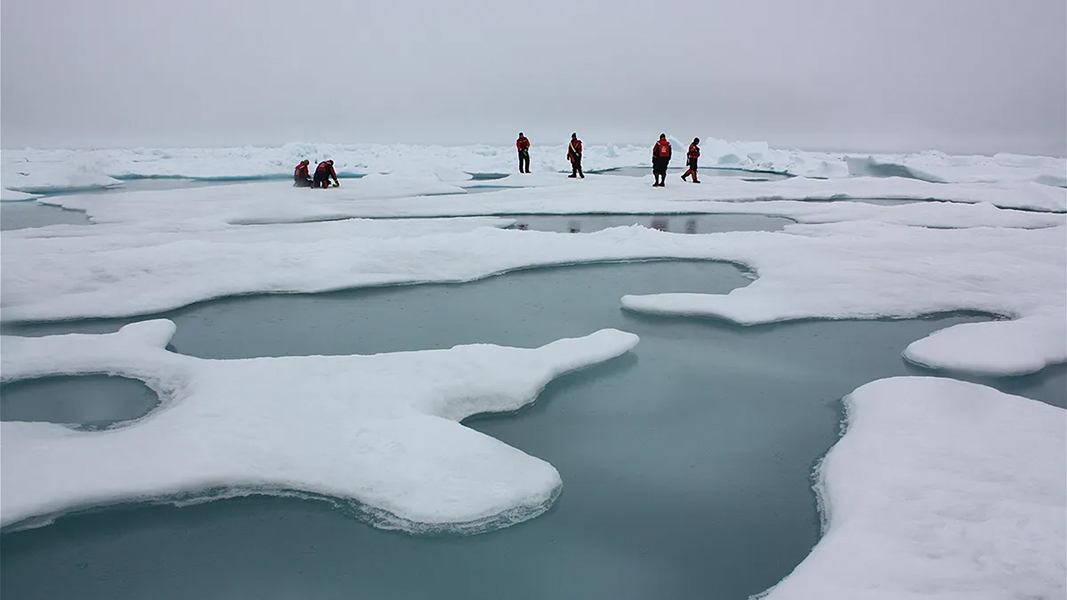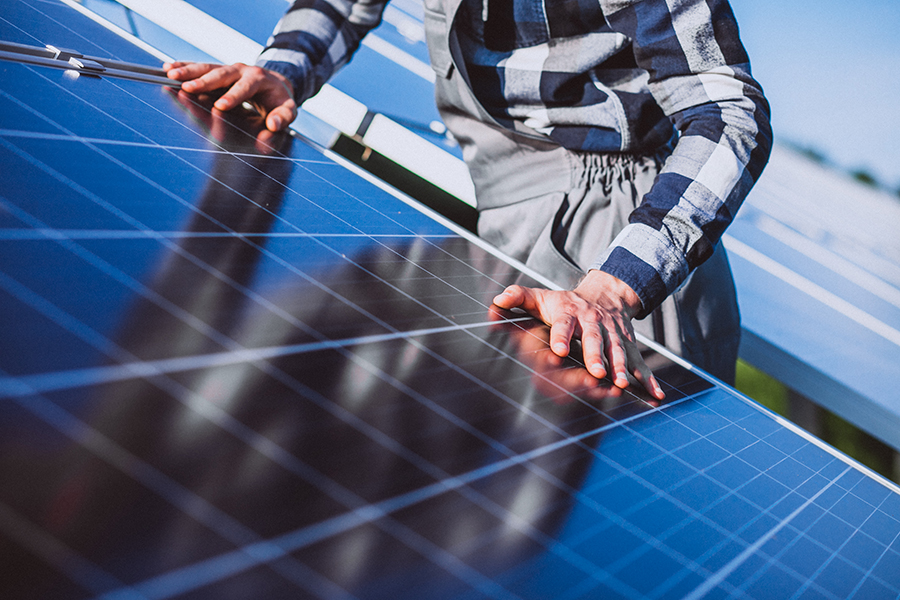A pair of studies demonstrate the uncertainty over when the Arctic will become seasonally sea ice free.
Every September since 1979, the U.S. government has measured the extent of sea ice in the Arctic. And the picture is not a pretty one—more than 2 million square kilometers have been lost in that time, leaving about 4.67 million square kilometers of sea ice intact.
Clearly, the Arctic is losing sea ice fast, but when the region will become seasonally sea ice free—a scenario that seems likely to occur before the end of the century—is still hotly debated. That’s because climate models underestimate the melting that’s been observed in recent years, leaving scientists uncertain of whether they can use these models to make predictions.
Two new publications have added to this discussion. The first, published in Nature Communications, provided evidence that the Arctic will become seasonally sea ice free in the next few decades even under low-emissions scenarios. The second, published in Nature Climate Change, proposed that the extent of Arctic sea ice will decline more slowly than previously thought because the effect of wind has not been adequately incorporated into models.
“The take-home message for the two together is that we need a better understanding of what the models are missing,” said physical oceanographer Erica Rosenblum from the University of Manitoba, who was not a part of either study. “If we don’t resolve that, we’re going to continue to have this very wide range” of possible scenarios.
Understanding Ice
Sea ice is complicated. It’s brittle, it fractures, it forms large and small pieces that melt differently, and historically, its thickness has been tough to measure. All this heterogeneity and uncertainty have made it very difficult for scientists to create models that accurately reflect the melting that’s been observed in reality.
To circumvent this difficulty, climate scientist Seung-Ki Min from Pohang University of Science and Technology in South Korea and his colleagues compared these imperfect models to observations of how sea ice has actually melted. They then adjusted the predictions made by models to be in line with historical differences between models and observations.
The results suggested the Arctic will soon become seasonally sea ice free even under some low-emissions scenarios. “Even if we achieve [the] Paris Agreement goal—2° warming,” Min said, summers will be ice-free in the Arctic within a quarter century.
The exact timeline will depend on how social and political systems adapt to our warming climate. Min and his colleagues examined four shared socioeconomic pathways—hypothetical descriptions of how the world may mitigate and adapt to climate change, each featuring different levels of international cooperation and attitudes toward fossil fuels.
If people around the world draw heavily on fossil fuels to continue elevating the global standard of living, the Arctic will see its first sea ice–free month around 2040, the researchers found. If the world prioritizes sustainable development, on the other hand, sea ice may persist year-round for an additional decade, and it may even recover after several seasonally ice-free decades.
The results illustrate the fragility of the Arctic and how close its ecosystem is to changing irrevocably, said climate scientist Christopher Horvat from the University of Auckland. “If we don’t get on these high-reduction scenarios,” added Horvat, who was not involved in the study, “ultimately, we’re going to lose all the sea ice in summer very soon.”
But What About the Wind?
Climate scientist Qinghua Ding from the University of California, Santa Barbara, on the other hand, thinks it’s an open question when the Arctic will lose its summer sea ice. The reasons models fail to accurately describe observations are still opaque in his view, so “it’s premature to do future projections.”
Part of the problem is that current models don’t reflect the extent to which wind may be a component of why sea ice is melting, Ding and his colleague Dániel Topál of the Université Catholique de Louvain put forth in a recent publication. Atmospheric circulation patterns can dramatically affect ground temperature by pushing warm air downward—the same process that caused a heat dome to form over the Pacific Northwest in 2021. Current climate models consider carbon dioxide levels to be the overwhelming cause of sea ice melting and attribute only about 1% to atmospheric circulation. Ding thinks circulation patterns may actually contribute around 30%.
The paper suggested that increased greenhouse gas emissions don’t affect Arctic sea ice as strongly as researchers have assumed, a picture that runs against conventional wisdom. “The ice-free summer will occur later, because right now, all the models are oversensitive,” Ding said. If Ding is correct, ice-free summers in the Arctic may be delayed until as late as 2070, depending on how well societies mitigate climate change.
Reconciling Opposing Predictions
At first glance, the two publications seem opposed, but Rosenblum sees them as two sides of the same coin. First, Min and his colleagues clearly documented that current models are flawed, and then Ding and his colleague pointed to wind as a potential source of that flaw. “They’re both interesting, in very different ways,” Rosenblum said.
Min is not convinced that the effect of atmospheric circulation on sea ice has been studied enough to attribute a strong connection. Ding admitted that the whole situation is still shrouded in uncertainty. “We know very little,” he said. “We really need to understand what the mechanism is—what are the dynamics behind historical melting?”
The take-home message is one of scientists’ favorite phrases: “Further investigation is warranted,” said Min.
— Saima May Sidik (@saimamaysidik), Science Writer
This story originally appeared at Eos.org and is republished here as part of Covering Climate Now, a global journalism collaboration strengthening coverage of the climate story.






